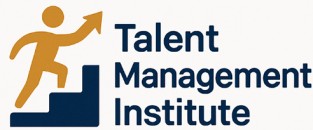
Understanding Office Management Software
Exploring the Basics of Office Management Software
The modern workplace demands efficiency and seamless integration between various aspects of business operations. Office management software is at the heart of this transformation, acting as a comprehensive tool that streamlines everyday tasks and enhances productivity. It encompasses a range of functionalities designed to support office managers, team leaders, and employees in managing projects and workflows effectively.
Integration and Efficiency: One of the core benefits of utilizing office management systems is the integration they offer. These platforms bring together diverse tools for project management, task tracking, and time management, ensuring that teams can work cohesively irrespective of their location, a crucial aspect in today's hybrid work environment.
Streamlining Operations: By offering a centralized system for managing meeting rooms, office space utilization, and visitor management, these tools optimize space management and reduce overheads. Employees can coordinate better through these platforms, scheduling tasks and meetings in real time, thus boosting workplace efficiency.
While exploring the potential of such systems, it’s essential to consider how an effective talent management strategy can further elevate the role of office management software, ensuring it aligns well with broader business goals.
The Role of Office Management Software in Talent Management
Maximizing Talent Potential through Software Solutions
Office management software plays an integral role in enhancing the efficiency of talent management. It streamlines the complex processes involved in managing a diverse workforce, offering office managers and HR professionals essential tools to align employee efforts with business objectives.
These software systems aid in simplifying talent management by providing detailed insights into team performance and workplace dynamics. For instance, features like project management and task management allow teams to effectively track time, prioritize tasks, and allocate resources efficiently. Real-time tools enable collaboration among team members, even in hybrid work environments, thus optimizing office space and enhancing productivity.
A critical aspect of these systems is space management, which ensures that office spaces, including meeting rooms, are utilized to their fullest potential, reducing overhead costs and minimizing disruptions. Additionally, management tools help office managers plan and oversee projects more effectively, boosting team dynamics and fostering a productive work environment.
Moreover, integrating office management software with visitor management and customer support systems can enhance the experience for employees and clients alike. Such an integrated approach not only streamlines operations but also supports the broader organizational goal of nurturing talent and deriving maximum value from human resources.
To learn more about how talent management strategies can be enhanced through innovative methods, check out this informative resource on leveraging business coaching for talent transformation.
Key Features to Look for in Office Management Software
Essential Features to Elevate Office Management
When choosing the right office management software to enhance the productivity of teams, it's crucial to identify features that align with the specific needs of your workplace. Robust systems can seamlessly integrate project management functionalities alongside traditional office features, thereby streamlining work processes and improving overall efficiency.
- Task Management: Effective software should offer tools for assigning, tracking, and managing tasks throughout their lifecycle. This keeps all team members on the same page and ensures deadlines are met.
- Space Management: The ability to effectively manage office space and resources, including meeting rooms and workstations, is essential. This feature helps in optimizing the physical office space, which can be especially beneficial in hybrid work setups.
- Time Tracking: A comprehensive time tracking feature can aid in monitoring project progress and team productivity. It empowers managers to allocate resources efficiently while ensuring that projects stick to their timelines.
- Visitor Management: For the businesses that require frequent client or customer visits, integrated visitor management capabilities ensure a seamless experience, tracking entry and exit, and maintaining security.
- Integration with Other Tools: The best office management systems offer seamless integration with other management tools already in use, such as customer support platforms and project management applications. This ensures a unified approach to managing diverse tasks and departments.
- Real-Time Collaboration: Tools that facilitate real-time collaboration enhance communication and facilitate teamwork, making it easier for teams to work together, despite being geographically dispersed.
- Free and Paid Plans: Consider software that offers a free version to allow teams to test the tool's capabilities before committing to a paid plan. This can be a strategic way to evaluate the system's suitability for your specific business needs.
Office managers play a pivotal role in choosing management systems that offer these features. Selecting the right tool not only optimizes the work process but also supports an organization's broader objectives, such as talent management. For further insights into crafting an effective talent management strategy, explore the comprehensive guide here.
Implementing Office Management Software: Best Practices
Optimizing the Deployment of Office Management Software
Implementing office management software can significantly enhance workplace efficiency and boost productivity among teams. However, like any tool, its success largely depends on planning and execution. Here are some best practices for seamlessly incorporating this technology into your business operations:- Assess Needs and Requirements: Before rolling out any management software, it's crucial to conduct a thorough assessment of your office and team's needs. Identify key features and functionalities that are essential for managing tasks, projects, and office space.
- Select the Right Tool: Choose a management tool that aligns with your business goals and operational workflows. Consider tools that offer comprehensive project management capabilities, visitor and team management features, real-time time tracking, and efficient space management.
- Customize and Adapt: Every office has unique needs. Customize management systems to fit your specific requirements. This might mean tailoring task management or meeting room scheduling, allowing for flexibility in both hybrid work environments and traditional setups.
- Provide Training: Equip employees and office managers with the knowledge they need to exploit the software's full benefits. Offering some free workshops or e-learning resources ensures everyone can navigate the tool efficiently.
- Monitor and Evaluate: Once deployed, regularly check how your team members use the software. Real-time tracking enables you to see how tasks are progressing and whether project deadlines are met. A feedback loop with employees helps you adapt the system for better results.
- Ensure Robust Customer Support: Choose software with reliable customer support. This can be invaluable for troubleshooting and ensures minimal downtime, allowing your team to focus on their work without interruptions.
- Scalability for Future Needs: Opt for a management system that can grow with your business. As teams expand and tasks become more complex, your software should be able to support these changes seamlessly.
Challenges and Solutions in Using Office Management Software
Addressing Obstacles and Finding Solutions in Office Management Systems
Navigating the ever-evolving landscape of office management software presents a unique set of challenges. These challenges may hinder the seamless integration and efficiency of tools within a business. Let’s explore some common hurdles and practical solutions adopted by successful teams.- Complex Integration Processes: Integrating management software with existing office systems can be daunting. Office managers can overcome this by selecting tools with interoperability features to ensure smooth communication between various applications. Opt for management systems that offer comprehensive APIs and customer support to assist with integration.
- User Adoption and Training: A significant amount of time might be required for employees to adapt to new systems. Ensuring a user-friendly interface can mitigate resistance and enhance collaboration. Employee training sessions focusing on key features like project management and time tracking are crucial to achieving sustained workplace efficiency.
- Managing Hybrid Workspaces: The rise of hybrid work models necessitates robust space management solutions. Office management software must effectively track and allocate office space and meeting rooms in real time, catering to both remote and onsite team members.
- Security Concerns: Protecting sensitive business data within software systems is a priority. Implement comprehensive security measures and regular updates to safeguard information. It's also essential to choose tools with advanced security features to minimize risks.
- Cost Management: Choosing the best office management tool often involves balancing costs. Many businesses shy away due to perceived expenses. However, there are free or scalable options available, allowing organizations to only pay for what they need.
Future Trends in Office Management Software and Talent Management
Anticipating the Future of Office Management in Talent Management
As organizations continue to adapt to evolving workplace needs, the future of office management software shows promising developments that can significantly enhance talent management processes. These advancements aim to streamline operations, elevate team collaboration, and optimize space management within the office.
Embracing Hybrid Work Models
The shift towards hybrid work demands robust office management systems capable of supporting both remote and in-office employees. Future software solutions are expected to integrate flexible work arrangements, allowing teams to track and manage projects efficiently regardless of location. This adaptability ensures workplace productivity while maintaining a cohesive team environment.
Advanced Space Management Tools
Space management is a critical component in maintaining an efficient office environment. With the advent of more sophisticated management tools, businesses will have the capability to tailor office spaces according to their unique needs. These tools will optimize the allocation of meeting rooms and office space, enhancing the utilization of the workplace.
Real-Time Collaboration Features
Office management software is evolving to incorporate real-time collaboration features, facilitating seamless communication among team members. This includes integrated task management and project management capabilities, ensuring that all tasks are visible and trackable across teams. Such features minimize delays and improve overall project efficiency.
AI-Powered Solutions for Better Decision Making
The rise of artificial intelligence in office management systems brings forward features that aid in predictive analytics and decision-making. AI insights can help office managers understand team performance, optimize workflows, and manage resources effectively, driving smarter business strategies.
Enhanced Customer Support and Integration Capabilities
Future-forward office management software will likely emphasize robust customer support alongside seamless integration capabilities with existing management systems. This ensures that businesses can tailor the software to address specific needs without causing disruptions to ongoing processes.
Keeping in mind these evolving trends, organizations can leverage the best office management tools to enhance their talent management strategies, ensuring an optimal workplace environment for future growth.













